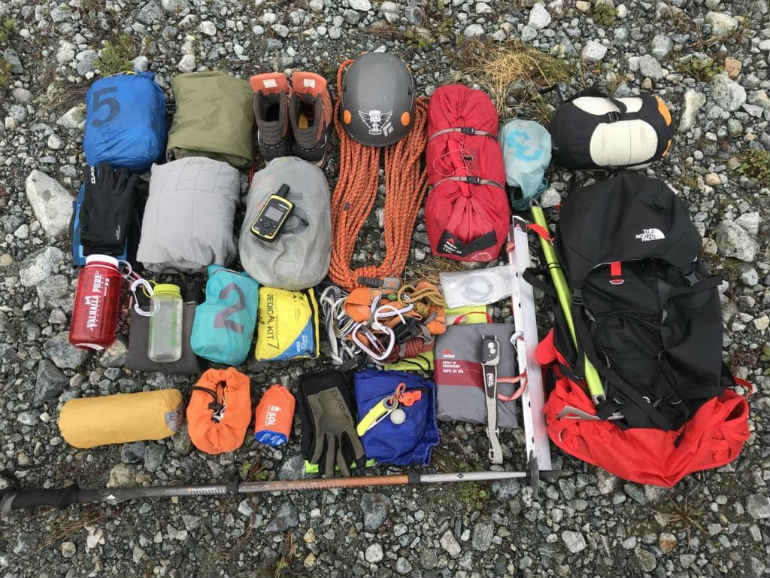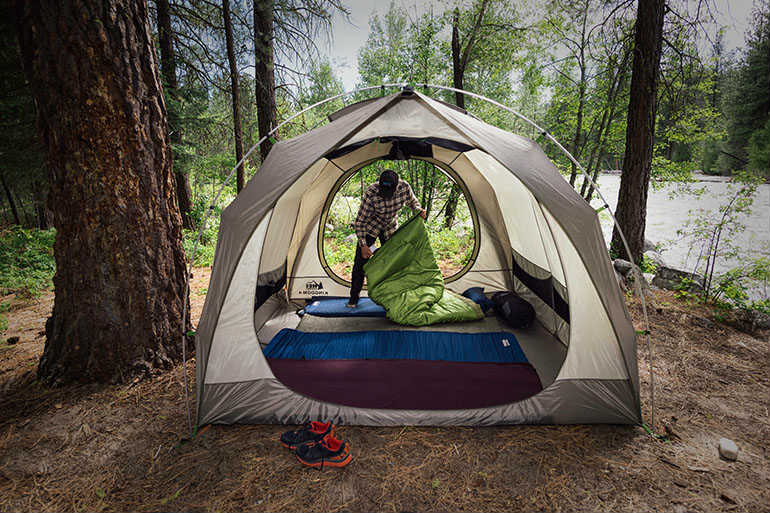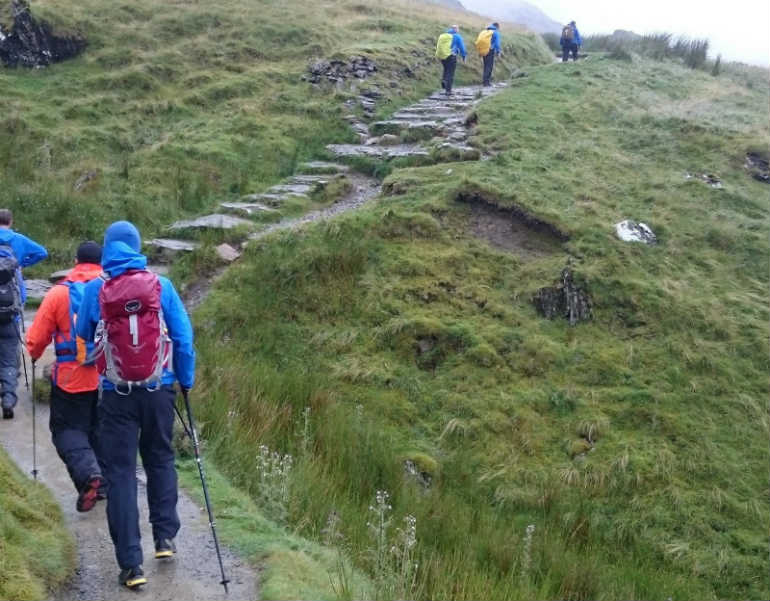Contents
Hiking is a great way to discover the beauty of nature and reap the benefits it has to offer. Besides, it allows you to take a break from the stress of everyday life. Sometimes it can be an iconic travel challenge like hiking the Great Himalaya Trail or the Inca Trail to Machu Picchu, but mainly, hiking is about fun and adventure.
However, in order to get the most out of your hiking experience, you need to prepare properly. Out there in the wild, weather and conditions are unpredictable and you need to be ready for everything that may come your way. That being said, here are the steps to get you ready when going on an outdoor adventure.

Find the Perfect Hiking Equipment
Preparing for hiking should start by getting the right equipment. Famous outdoorsmen advise to travel light, however, you should always be prepared for the worst so choose what you bring wisely.
Regardless of whether you’re new to hiking or “born to hike”, make sure you have the right hiking travel equipment. Not only does your comfort depends on it, but the right hiking equipment can provide the needed protection from weather extremes and various terrains. Here are the essentials you need to bring along with you:
- Backpack – Finding the most suitable backpack is important as you will need it for carrying the hiking gear essentials from one place to another. Choose the size of a backpack according to the length of the hike. A larger backpack is necessary for longer hikes, while a smaller backpack is suitable for shorter trips when you’re carrying less weight. Make sure you adjust it properly, so it’s comfortable on the hips and on the shoulders.
- Tent – When planning to go on a longer hiking adventure, bringing a tent along is a must. In fact, even if you only want to go on a single-day hike, having a tent with you can offer protection should you get stuck out there and have to spend the night. When looking for a tent, it’s best to choose a lightweight option, functional, and easy to carry. Depending on your company, you can select a one-person, two-person or even eight-person type of tent.

- Sleeping Bags – To ensure your rest during the hiking trip, you’ll need a proper sleeping bag. Sleeping bags are categorised according to temperature, so you should choose one that is suitable for the temperature range of the area. Next, consider the type of insulation, space and features. There is a variety of lengths and ways of closing that will add to your comfort. Also, you can find a special category for women, men or kids only.
- Sleeping Mats – The quality of your sleeping will depend a lot on the sleeping mat, which keeps you from the cold ground. Make sure you carry it with you, especially if hiking in colder months or around wet terrain.
- Stuff Sacks, Dry Sacks & Duffle Bags – These are the crucial items for keeping your hiking and travel equipment organised and dry at all times. They make everything easier by minimising excess weight and accessories.
- Travel Towels – A travel towel is a must for any hiking trip. Highly absorbent and packable, your towel will keep you dry and comfortable the whole way.
- Hiking Footwear & Clothing – High quality and comfortable boots will make any tour over difficult terrain easy and safe. Make sure to choose boots that are the ideal fit for you because feet that hurt are the last thing you want when you need to walk long distances. When it comes to clothing, choose breathable and quick-drying materials. If you’re hiking during cold weather, pay attention to insulation and bring layers with you.
- Trekking/Walking Poles – Trekking or walking poles offer security and stability when you’re hiking. They can be individually adjusted to any length and easily transported on your backpack. You will appreciate them on a hill walk.
- Travel Lights – Finding your way in the night is a tough mission if not carrying any light source. A torch will brighten up any track, while a headlamp is more recommended for backcountry travel because of the hands-free option, so you can hold your trekking poles or prepare dinner easily.
- Hiking & Camping Food – Packing and preparing the food for your hiking trip can be simple and convenient if planned well. To make sure you don’t take anything that only weighs you down, make a meal plan for every day of the hike. Extra food for an added day is usually enough, but try to be as much as accurate on the amount of food you’ll take with you.
- Hiking Stoves, Cookware & Utensils – When you’re out there, cooking your own food will only make the overall experience more interesting and satisfying. So, bring along a lightweight, portable stove and some cookware and utensils to cook some tasty outdoor dishes. A sponge and biodegradable soap will come in handy for washing the dishes.
- Water/Bottles, Filters & Purifiers – Keeping yourself hydrated while hiking is very important and the amount of water you will need depends on the intensity of your hike and the weather, as well as your sweat rate. If you need to use water that you’ve come across in the wild, always use a filter, an ultralight, or tablets to purify it.
- Survival Gear & Supplies – Enjoying hiking trips it to the fullest also means to be ready for anything that may stand on your way. For that, you need to prepare a survival kit which can be helpful in case of an emergency. Have it in your backpack and keep on the track!
Once you have all your travel equipment purchased, you can move onto the next steps and plan out your hiking trip in details.

Assess Your Fitness Level
Preparing for a hike is not only packing a bag. It takes an honest assessment of your physical shape, your strengths and weaknesses. Choosing the trail according to your fitness level will make the hiking more enjoyable. And it will get better with every next hike.
Choose Your Hiking Partner
Hiking is a memorable experience, but it can get unpredictable at times. That’s why sharing an adventure with friends is always a good idea. However, if your friends are not up to the challenge, check with the nearest hiking club and see what they offer. Many of them have organised hiking trips, classes, and events you can join.
And if none of the above is an option for you, then maybe you’ll prefer to enjoy the trip by yourself. If you’re new to hiking, then it’s better to start with short trips to well-known hiking trails. In any case, always make sure that someone is informed on your destination and the time you’re planning to spend there.
Calculate the Time and Observe the Weather
Depending on how much time you have, you can select your hiking destination. If you have a couple of hours, you will most likely choose a hiking trail that is close to your living area or to a parking lot and will make a great day hike. But if you have a few days available, then you can explore further and look for more impressive scenery. Whatever the case, always consider the time needed to get to the end-point and back.
Also, plan your hike according to the time of the year because some trails might be still covered in snow in early spring, and always make sure to check the forecast before heading out.

Check the Distance
At this point, it’s important to know how many miles are you able to hike in order to pick the right trail for you. Considering that an average walking pace is around 3 kilometres per hour, a longer route will take a couple of hours a day, hiking on a diverse terrain while carrying weight on your back.
Set Your Limits
When choosing a hiking trail, pay attention to the difficulty rating. A trail that gains 500 metres in elevation in a kilometre of walking is considered a steep trail. To set your limits is to determine how comfortable you can handle the hike and as you’ll be getting more experienced, those limits will expand.
Respect the Rules
Almost every trail has its set of rules and you can go through them before starting the hike. Follow the “leave no trace” principle which stands for leaving the hiking area clean by taking all of your trash, respecting the wildlife and being considerate of others.

